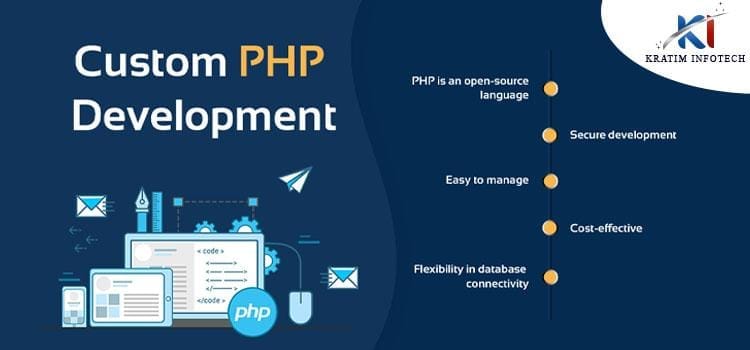How to Optimize Security in Custom PHP Development
When it comes to custom PHP development, ensuring the security of your web applications is paramount. With the prevalence of cyber threats and vulnerabilities, taking proactive measures to optimise security is crucial. This article will guide you through the steps to optimise security in custom PHP development, helping you protect your applications and user data.
Keep PHP Updated:
Regularly update your PHP version to the latest stable release. New versions often include security patches and bug fixes that address vulnerabilities. Staying up-to-date with PHP versions ensures that your custom PHP applications are built on a secure foundation.
Validate and Sanitise User Input:
Implement strict validation and sanitization techniques for user input to prevent common security issues like SQL injection and cross-site scripting (XSS) attacks. Use functions such as filter_input and html specialchars to validate and sanitise user input effectively.
Implement Parameterized Queries:
Utilise parameterized queries or prepared statements when interacting with databases. This technique prevents SQL injection attacks by separating SQL code from user-supplied input, reducing the risk of malicious SQL code execution.
Secure File Uploads:
Apply strict validation and restrictions on file uploads to prevent potential security risks. Limit the file types allowed for upload, set maximum file sizes, and store uploaded files outside the web root directory to avoid unauthorised access and execution.
Use Secure Authentication and Authorization:
Implement secure authentication and authorization mechanisms to protect user accounts and sensitive information. Utilise strong password hashing algorithms like bcrypt and enforce password complexity requirements. Implement role-based access control (RBAC) to ensure that only authorised users can access specific resources.
Protect Against Cross-Site Scripting (XSS) Attacks:
Implement output escaping techniques to mitigate the risk of cross-site scripting (XSS) attacks. Use functions like html specialchars when displaying user-generated content to prevent the execution of malicious scripts.
Implement Session Management:
Use secure session management techniques to protect session data and prevent session hijacking. Regenerate session IDs upon authentication, enforce session timeouts, and store session data securely, preferably using server-side storage mechanisms.
Implement Secure File and Directory Permissions:
Set appropriate file and directory permissions to ensure that only authorised users or processes can access sensitive files and directories. Restrict write access where possible and limit permissions to the necessary user and group.
Employ Security Headers:
Utilise security headers like Content Security Policy (CSP), HTTP Strict Transport Security (HSTS), and X-XSS-Protection to enhance the security of your custom PHP applications. These headers provide an additional layer of protection against various types of attacks.
Regularly Perform Security Audits and Testing:
Regularly conduct security audits and testing of your custom PHP applications to identify potential vulnerabilities. Utilize tools like vulnerability scanners, penetration testing, and code reviews to uncover security weaknesses and address them promptly.
Conclusion:
Optimizing security in custom PHP development is vital to protect your web applications, user data, and maintain trust with your users. By following the best practices mentioned above, such as keeping PHP updated, validating user input, securing file uploads, implementing secure authentication, and performing regular security audits, you can bolster the security of your custom PHP applications and mitigate the risk of security breaches.

